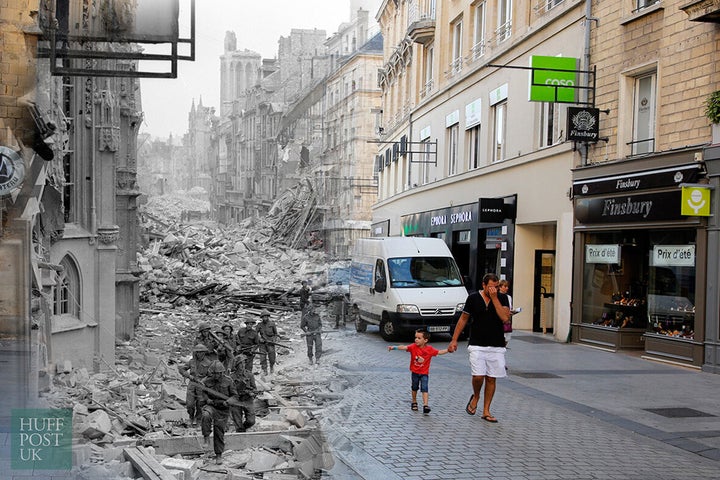Survivors of the largest seaborne invasion in history have been joined by world leaders on the beaches of Normandy to honour those who died on D-Day 75 years ago today.
The Normandy landings were a feat months in the planning and kept secret from Nazi Germany despite a huge trans-Atlantic mobilisation of industry and manpower.

In blustery winds in the early hours of June 6, 1944, thousands of Allied paratroopers jumped behind Germany’s coastal defences. Then, as day broke, warships pounded German positions before hundreds of landing craft disgorged the infantry troops.
Survivors recall the sea being red with blood. Thousands were killed on both sides on the beaches, codenamed Gold, Juno, Sword, Utah and Omaha by the Allies.
The following pictures combine original photos taken on and around D-Day with others taken in 2014 and show holidaymakers in the sun, largely oblivious to the horror that took place where they stood over 70 years ago.
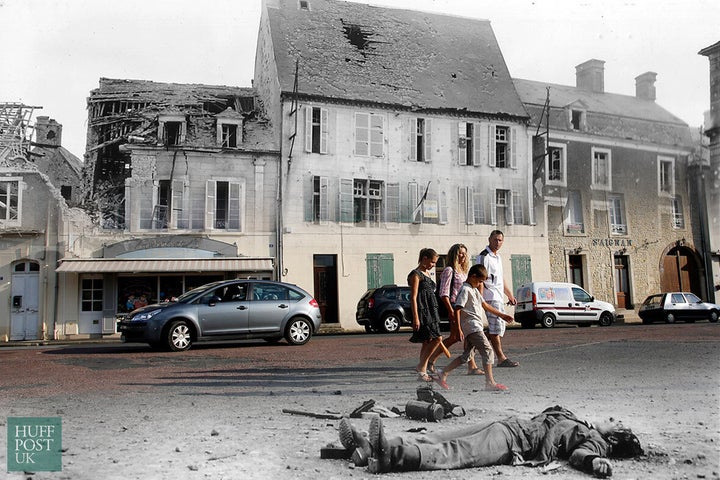
Events to commemorate the 75th anniversary of D-Day have begun in Normandy with a lone piper in Port Winston marking the minute the invasion began and the moment the first British soldier landed on Gold beach.
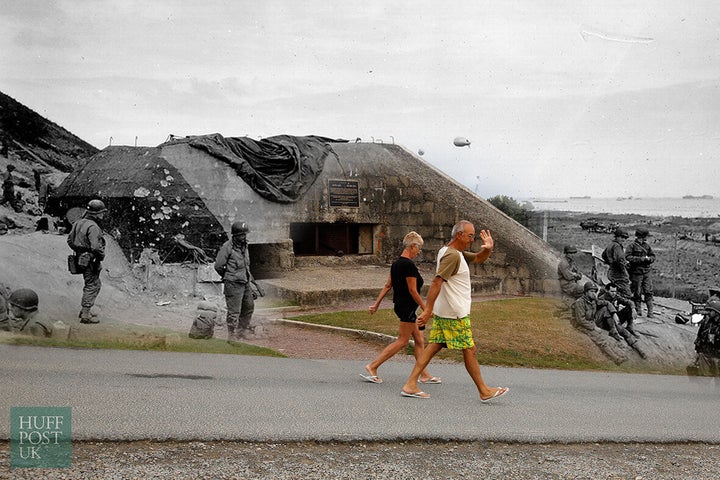
Later veterans will descend on the town square in France as part of a parade, before a Red Arrows flypast and a firework display.
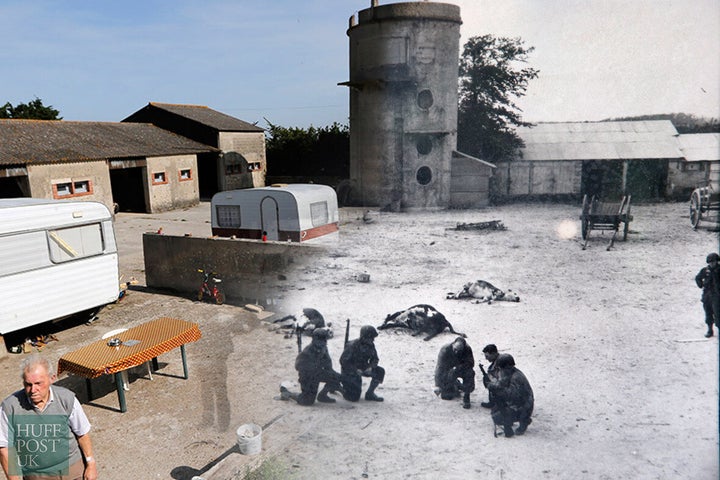
On Wednesday a 95-year-old veteran said it was “wonderful in every way” to be able to parachute into Normandy 75 years after he did so for D-Day.
Harry Read took part in a tandem jump with the Red Devils after a display of some 280 parachutists in Sannerville.
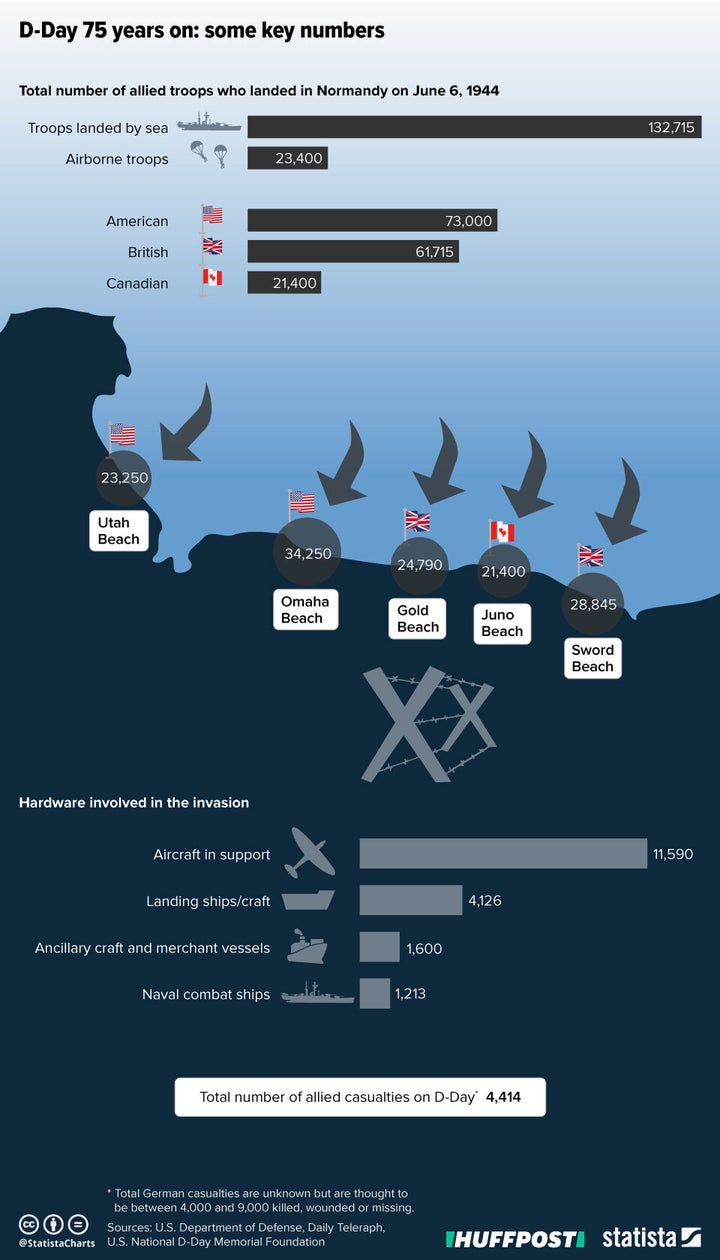
Read and John Hutton, 94, took off from Duxford in Cambridgeshire and flew over to France, landing in fields overlooked by poppies which was the original drop zone for the 8th (Midlands) Parachute Battalion, who went on to destroy bridges in a bid to restrict German movements during the missions.

As he landed in Sannerville, he had with him the medals of his wife Kate’s great-uncle Lieutenant Richard Prince – who jumped in on D-Day as part of the 7th (Light Infantry) Parachute Battalion.
The unit was tasked with relieving the glider troops who captured Pegasus Bridge but he was injured a few days into the campaign and later served in Palestine and Malaya after the end of the Second World War.
After the jump, Col Jackson said he pictured the bravery and efforts of those fighting on D-Day as the aircraft flew over.
He said: “It was really emotional actually.
“As we flew over the coast I was thinking it was the first time this had been done and it is really special.
“Seeing how many people were watching was quite humbling.”
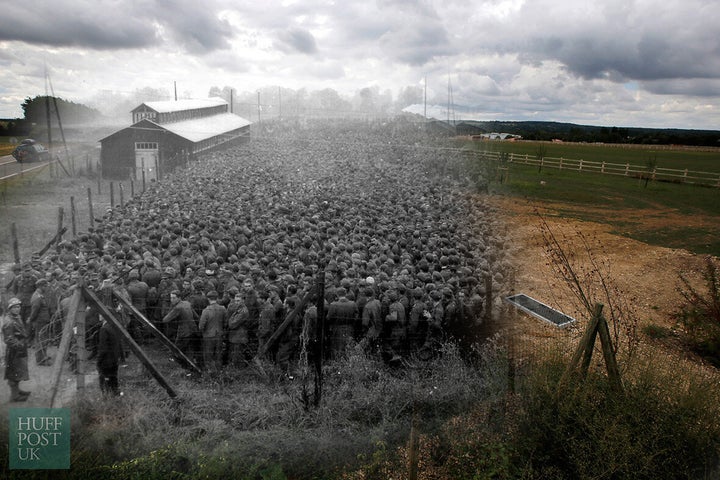
On the south coast of England, Britain’s Queen Elizabeth led presidents and prime ministers on Wednesday in paying tribute to surviving D-Day veterans and their fallen comrades.
“The heroism, courage and sacrifice of those who lost their lives will never be forgotten,” the 93-year-old monarch said. “It is with humility and pleasure, on behalf of the entire country – indeed the whole free world – that I say to you all: thank you.”
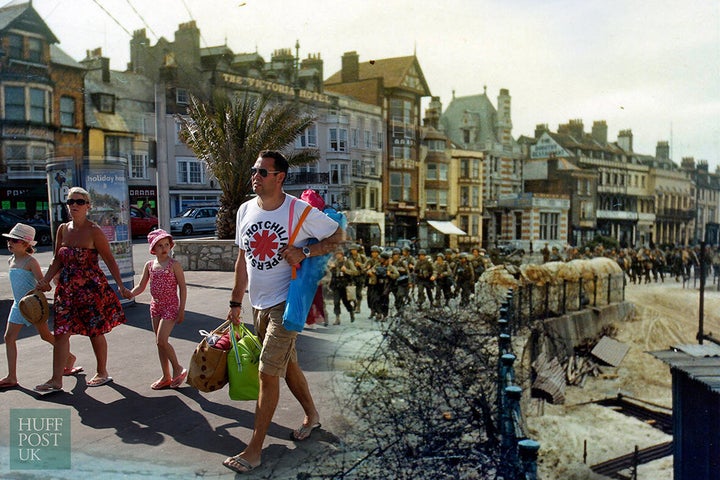
German Chancellor Angela Merkel praised the sacrifice of tens of thousands of soldiers in a military operation that brought freedom from National Socialism to Germany.
“That I, as German chancellor, can be here today, that today we stand together for peace and freedom, is a gift from history that must be cared for and protected,” she said.
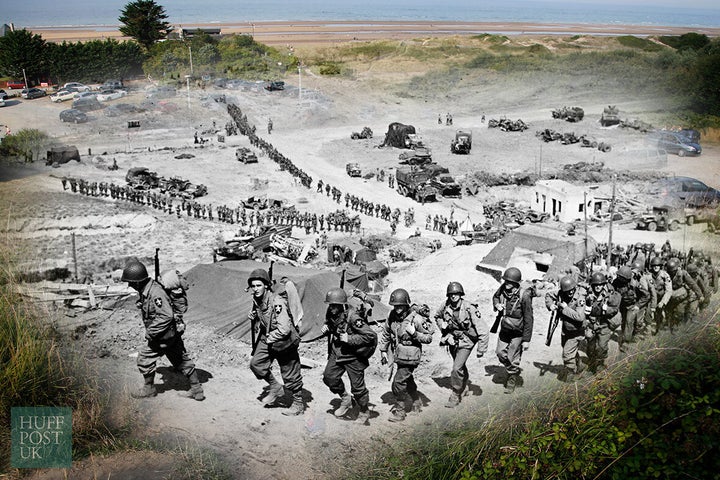
Trump read a prayer spoken by Franklin D. Roosevelt in 1944, capping a three-day state visit to Britain where he had lavished praise on the U.S. ally and said wartime bonds forged the “greatest alliance the world has ever known”.
Trump’s forthright diplomacy and “America First” policy have, however, shaken the NATO alliance and tested relations with erstwhile allies including Britain and France.
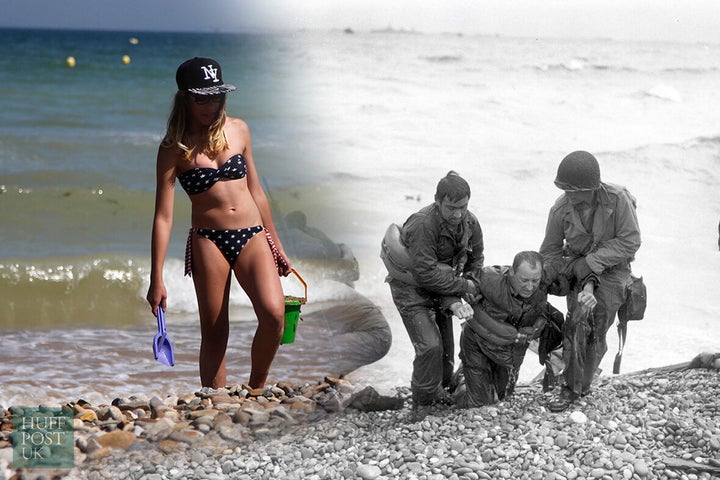
Speaking at a weekly news conference in Moscow on Wednesday, Foreign Ministry spokeswoman Maria Zakharova offered a tribute to those who died on World War Two’s western front and said Moscow appreciated the Allied war effort.
“It should of course not be exaggerated. And especially not at the same time as diminishing the Soviet Union’s titanic efforts, without which this victory simply would not have happened,” she said.
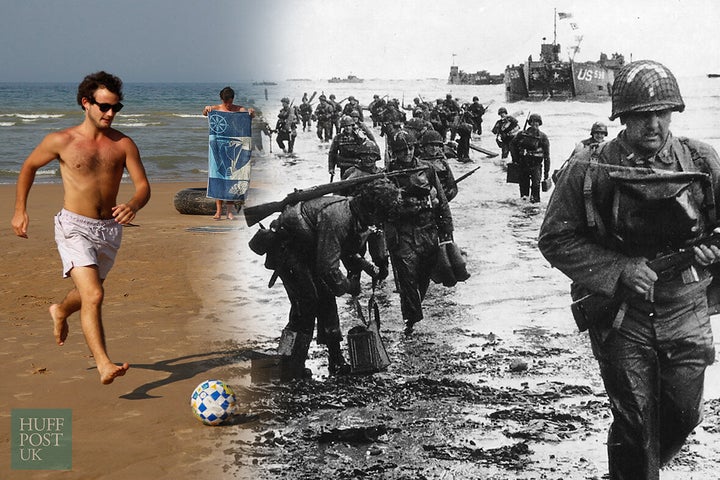
Chaplain General Clinton Langston opened the ceremony on Thursday morning, giving thanks to those who served in the campaign from June 5 to August 31 1944, Reuters reports.
He said: “It is only right and proper that their sacrifice and service is acknowledged and commemorated here as we gather to inaugurate the site of this British Normandy Memorial.”
Normandy veteran and patron of The Normandy Trust George Batts told the crowd: “They were the soldiers of democracy.
“They were the men of D-Day and to them we owe our freedom.”
